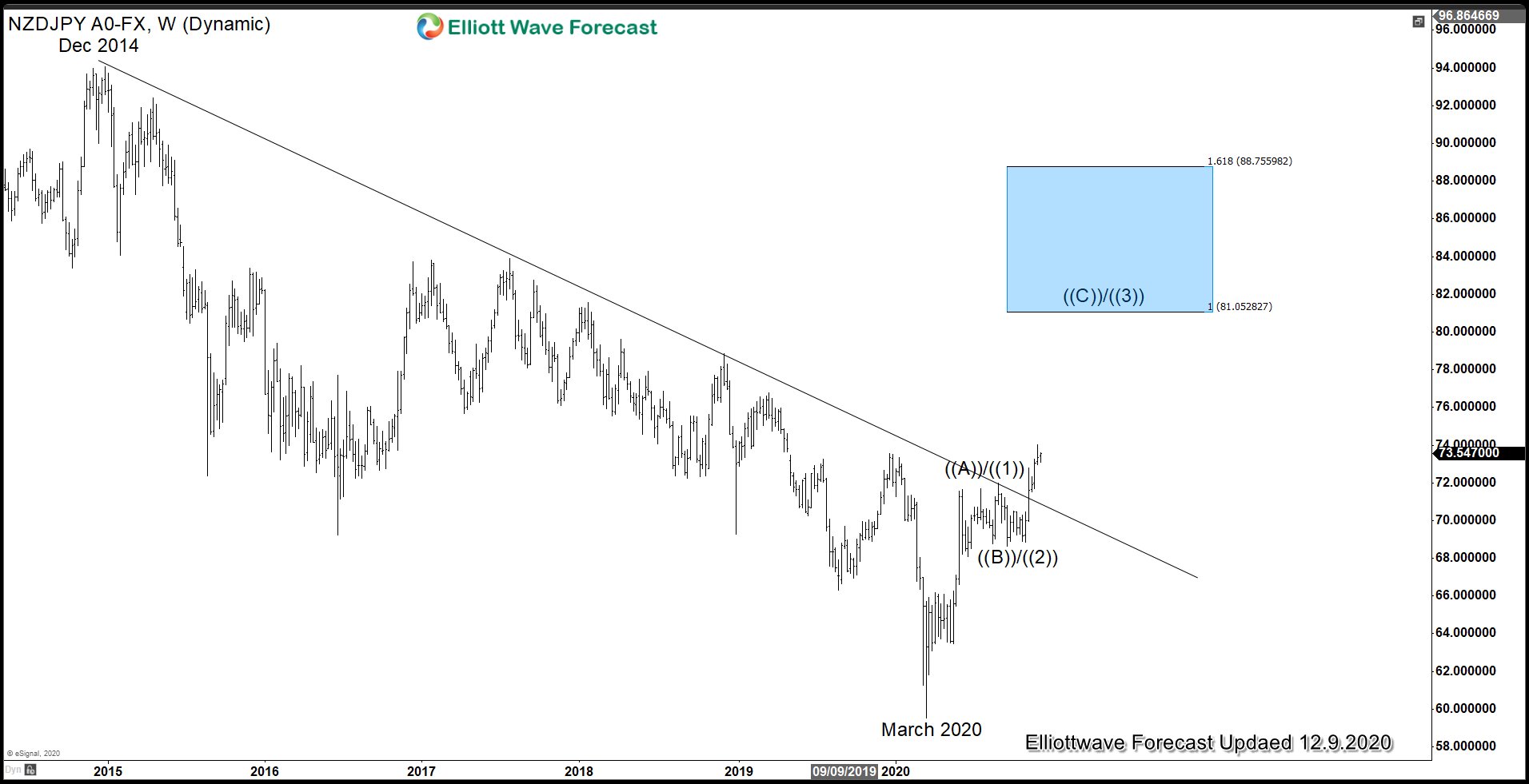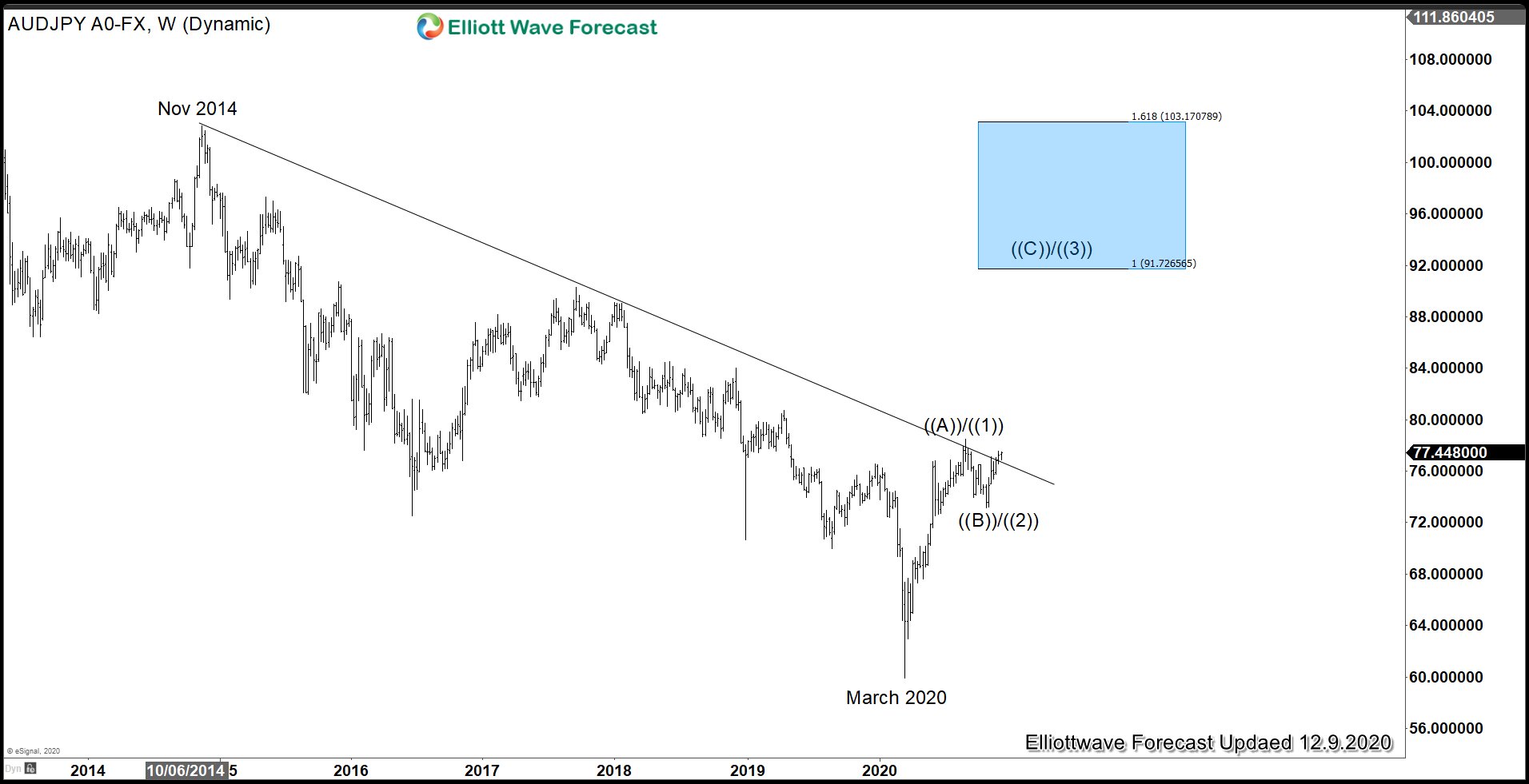Elliottwave-Forecast.com (EWF) approach to forecasting is unique compared to other services / wavers. Through years of experience, we have developed tools in addition to Elliott Wave to improve the forecasting accuracy. One of the chief complains with Elliott Wave is that the theory provides at least 1 if not more alternative count. The technique is flexible enough to allow multiple paths especially in the short term.
We therefore stress to our members the importance of understanding the right side. The right side is very important to know because the short term paths can vary in 1 more more ways. Despite the possible variation, Elliott Wave is still very useful to traders. We can use the math analogy. There are several ways to sum two numbers in order to get the result 10. For example, we can have 1+9, or 2+8, or 3+7, or 4+6, or 5+5, or 6+4, or 7+3, or 8+2, or 9+1. We can see here we can have 9 different ways/paths to get into number 10. The end result is the same, but the means to get there can vary. We can look at the market in the same way. Think of number 10 as the right side of the market. Then think of the various summation possibilities as the different short term paths available.
Determining the right side of the market is easier than figuring out the exact short term path to get there. We can never know 100% the short term path, but we at EWF develop our proprietary tools of 3, 7, 11 swing. Regardless which short term path it takes, a corrective structure always unfolds in 3, 7, or 11 swing. Thus, when the right side is bullish, we tell members to only look to buy dips at the extreme area in 3, 7, or 11 swing. Conversely, when the right side is bearish, we tell members to only look to sell rallies at the extreme area in 3, 7, or 11 swing.
We understand Elliott Wave can offer 1 or more alternative counts. However, if we can eliminate some of these alternate counts, we can end up with smaller universe of possibilities, and therefore improve our forecasting accuracy. One tool we develop for this purpose is the correlation. Many wavers only follow small number of markets. They only try to label a market in isolation. At EWF, our philosophy is that the market is 1 single entity. Therefore, the more market we follow, the more we understand it. Let’s take a look at an example of correlation below
NZDJPY Weekly Elliott Wave
NZDJPY is the first pair in our 72 instrument which gives us very valuable information for the rest of Yen group. As the weekly chart above shows, it’s the first pair to break above the long term bearish channel from December 2014 high. It’s also the first Yen pairs to create a bullish sequence (a sequence of higher high) from March 2020 low. We can see that pair created a connector in wave ((A))/((1)) and ((B))/((2)) from March 2020 low. It tells us that NZDJPY should continue to stay supported until pair reaches the blue box. We know what the right side is for the NZDJPY.
AUDJPY Weekly Elliott Wave
Unlike AUDJPY, the pair has not created a bullish sequence, and it has not fully broken above the bearish channel from November 2014 high. If we only trade and analyze AUDJPY in isolation, we still can’t conclude the right side of the market. The reason is because unless the pair breaks above wave ((A))/((1)), we still technically can’t rule out a double correction. However, it’s at this stage where correlation can help. Knowing that NZDJPY has already created a bullish sequence and broken above the long term bearish channel, we can conclude the right side of AUDJPY should be to the upside as well. Therefore we can make the more aggressive count even before the confirmation of a break above wave ((A))/((1)).
EURJPY Weekly Elliott Wave
In a similar way, EURJPY has not created a bullish sequence and it has barely broken above the bearish trend line from December 2014 high. However, in the same way, knowing the NZDJPY right side helps us to eliminate a double correction possibility in wave (B)/(2). We can better forecast Yen pairs as a group because we see the group as a whole and not just in individual isolation.
Source: How the Right Side and Correlation Help Improve Accuracy


